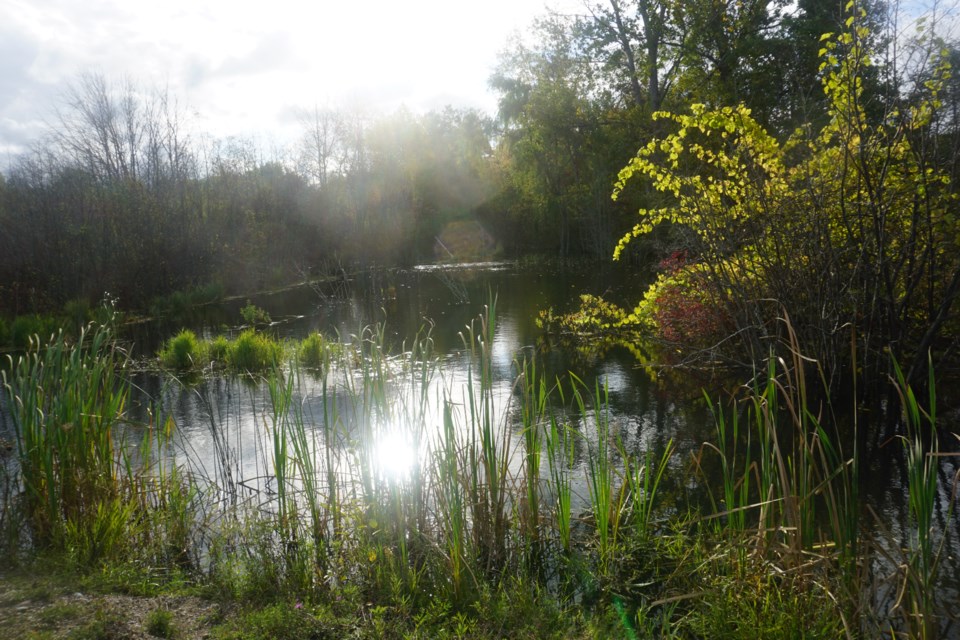Midland Today welcomes letters to the editor. They can be sent to [email protected]. Please include your daytime phone number and address (for verification of authorship, not publication).
I read your recent article on MZOs and found it shocking that I had never heard of them before, especially as they seem to be targeting provincially significant wetlands. As a third-year environmental science major at the University of Ottawa, I wanted to further elucidate the benefits we lose when wetlands are developed.
Going to the Wye Marsh for an afternoon is a great way to enjoy the outdoors for anyone living in the Midland area. Whether they attend with their school on a field trip or go with their family, it’s something almost every Midlander has done.
We enjoy the peace and quiet of the Marsh, seeing the trumpeter swans, and feeding the chickadees. We’re very lucky to be able to experience just a sliver of the biodiversity that wetlands make possible for our area.
Unfortunately, the use of Minister’s Zoning Orders (MZOs) seems to be on a mission to reduce the amount of these invaluable areas in Ontario.
The rate at which the provincial Conservative government is using MZOs to push through development projects during the COVID-19 economic slowdown is appalling. Especially as they seem to be targeting environmental areas that are vulnerable and invaluable in the global fight against climate change.
Some of these areas being targeted are the provincially significant wetland (PSW) in Pickering, three PSWs in Vaughan for a Walmart distribution facility, and potentially five other wetlands in the East Humber River Wetland Complex in Vaughan.
For whatever reason developers seem to think that wetlands are easy targets despite the fact that they provide us with numerous direct and indirect benefits. Wetlands give us a place of recreation whether this is hiking, canoeing, kayaking, cross-country skiing, boating, or fishing. They also provide us with even more important benefits such as nutrient cycling (an important one is the carbon cycle: taking carbon dioxide out of the air and storing it in a solid form such as plants), flood control, storm protection, the ability for groundwater levels to recharge during a drought, water filtration, and wetlands prevent the erosion of shorelines. Furthermore, as anyone has learned if they have visited the Wye Marsh, wetlands also provide us with increased biodiversity because they provide habitat and food for a variety of plants and animals, and a sense of culture and heritage.
As if all this were not enough, about half of wetlands are what are called peatlands and they are named such because they contain peat, which stores a great deal of carbon for us. Peat is made from the partial breakdown of plants in wet environments with stagnant or slow-moving water.
Peatlands are very important because while they only make up 3% of the land on Earth, they store more carbon dioxide than all of the world’s forests combined.
This is extremely significant for the world’s continuing fight against climate change as the most frequent culprit is carbon dioxide and peatlands are able to take this out of the air and store it for a long time in the form of peat. Unfortunately, the carbon dioxide only stays in the peat so long as the peatland is allowed to stay wet and undeveloped.
According to the UN Environment Programme, the draining of peatlands for development accounts for 10% of the global fossil fuels emitted annually.
While the Ontario Ministry of Municipal Affairs and Housing claims that “new development is not permitted on provincially significant wetlands” even with a Minister’s zoning order, that seems to be exactly what is being targeted for these new developments.
And while developers are encouraged to seek the input of environmentalists, they are not required to listen to them, which further puts these vulnerable ecosystems at risk.
If MZOs continue to be approved at their current rate for the development of wetlands, Ontarians stand to lose recreation spaces and invaluable ecosystem services including flood control, groundwater recharge and natural water filtration in addition to long-term carbon storage in the form of peat.
Without these wetlands, Ontario will lose a large portion of its biodiversity and will generate a lot more carbon dioxide, adding to the current climate change crisis. It is imperative that Ontario’s wetlands are protected for future generations to enjoy their numerous benefits.
Thank you for drawing the community's attention to this pressing issue.
Emily Brooks
Midland



